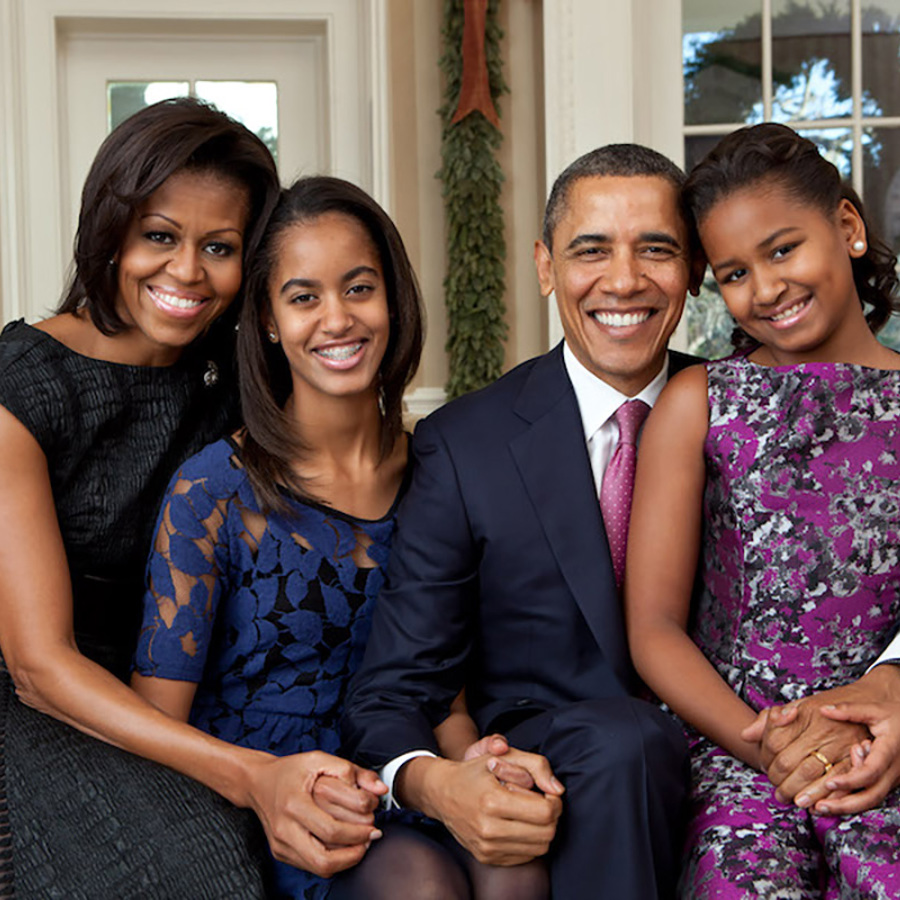
Why do children from the same parents have different appearances and personalities?
January 26, 2011

- Related Topics:
- Appearance,
- Personality traits,
- Complex traits,
- Environmental influence
A curious adult from California asks:
“Why do children from the same parents have different heights, different eye colors, body builds, personalities, etc.?”
Children from the same parents do not always look or act alike. In fact, it can sometimes be hard to tell which children are siblings just by looking at them.
This is what makes each one of us so unique. Could you imagine if every child from the same parents looked and acted identically? We would not have nearly as much diversity in our world. Also, you can imagine that families would not be nearly as interesting.
The answer to why this happens has to do with our genes and how they are passed on. Each gene has the instructions for one small part of you. You are who you are because of the particular set of 25,000 genes you got from your parents and the environment you developed and grew up in.
So part of the explanation is easy...you and your siblings grew up in different environments so you are bound to be different. But you also each inherited a completely different set of genes from each parent. This means you are a completely new, never before seen genetic combination.
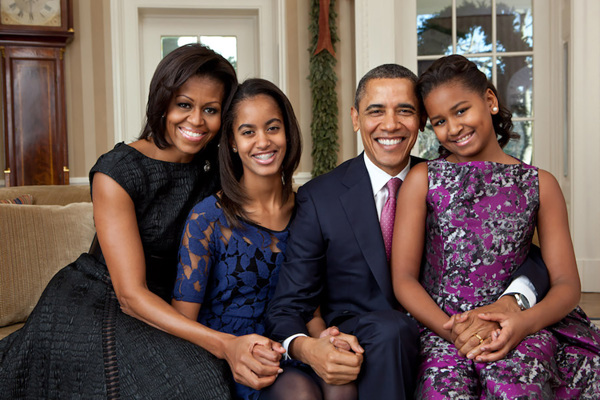
The next question is how can you each get a completely different set of genes from the same set of parents? The answer has to do with the fact that each parent actually has two different sets of genes. And that each parent passes only half of their genes to their child. And that the half that gets passed down is random.
All of this together ensures that each child ends up with a different, unique set of genes. I am going to spend the rest of our time trying to explain how this works with one gene--MC1R.
MC1R is a good gene to look at because, as you'll see, it is genetically very simple. It determines whether or not someone will have red hair, pale skin, and/or freckles.
Then I'll expand the answer to include all of our other genes. In the end, you'll see that parents can make an almost infinite variety of possible kids. Which is one reason why siblings can be so different.
Genes can Come in Different Versions
Everyone has two copies of most of their genes. We get one copy from our mom and one copy from our dad.
So everyone has two copies of the MC1R gene. Of course having two copies of a gene wouldn't matter if each copy was the same. But they aren't. Each gene can come in different versions (scientists call these different versions alleles).
MC1R comes in two different versions, red and not-red. Since we have two copies of MC1R, everyone has one of three possible combinations. They can have two reds, a red and a not-red or two not-reds.
People with two copies of the red version of MC1R have red hair, pale skin and freckles. People with one version of each often have pale skin and freckles and people with two not-red versions can have any shade of hair or skin color (depending on their other genes).
So people are not different because they have different genes. As humans, we all share the same genes. What makes us different is that we have different versions of the same genes.
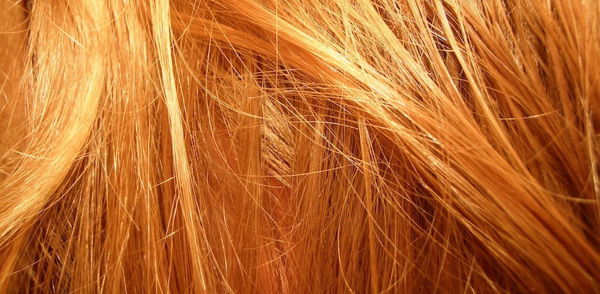
Which Gene Copy you Get is Random
A crucial piece to the puzzle in figuring out how siblings can look so different when they come from the same parents has to do with how genes are passed down. Which of your parents' two gene copies you end up with is chosen at random.
If your parent has two different copies of a gene, you have an equal chance of getting either one. And the same is true for each of your siblings.
It's like flipping a coin. You might get heads but your brother or sister might get tails.
Let's put this all together to see how it works. First we'll use the MC1R gene. Then we'll expand to the other 25,000 or so genes.
Imagine two parents that have one red and one not-red copy of the MC1R gene. They can have any hair color and probably have pale skin and freckles. Let's use an example of a family tree to see what their kids might look like:
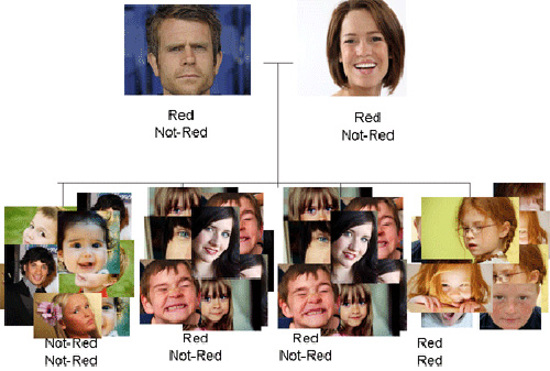
As you can see, because of this one gene, the parents can have three types of kids:
- If both parents pass a red version down, then that child will have red hair, pale skin and freckles
- If one parent passes a red and the other a not-red, then that child will not have red hair and, most likely, will have pale skin and freckles
- If both parents pass a not-red version, then that child will have a variety of other hair and skin colors
Because of the other thousands of genes with their different gene versions, there is a huge variety within each group too. So the red haired group can be tall, short, happy, grumpy, have blue, green, brown, hazel, etc., eyes, and so on. Same thing with the other groups as well.
It's like having two big bags of 50,000 different colored marbles. Imagine pulling 25,000 out of each bag, combining them and then recording the result. When you're done, you then return the marbles back to their original bags and then take another 25,000 out of each. Odds are you'll get two very different sets. Just like you'd get two very different kids.
Genes are Not the Whole Story
Genes are not the only reason siblings are different. If you know any identical twins, you'll know they are definitely different people even though they share the exact same genes.
So why do even identical twins, with the same DNA, have different personalities? Or body builds? The last piece of the puzzle comes from our environment.
For many of our characteristics, such as body build and personality, our genes and our environment work together to make us who we are. A person's environment can include things like exposures to chemicals, exercise habits and eating habits. For our personality, it is also important to remember that things like a child's social and family environment and relationships play an important role.
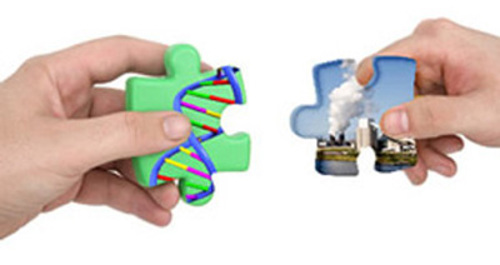
So if children from the same family live in the same household, does that mean that they are exposed to the same environment? No! Children will have different relationships, might be in different schools, and might have different habits for things like eating and exercise.
Given all of the possibilities for different genes and an individual's environment, it is no surprise that even children from the same parents are very unique. In fact, your unique genetic combination was never seen before you and will never be seen again.

Author: Kim Vande Wydeven
When this answer was published in 2011, Kim was a student in the Stanford MS Program in Human Genetics and Genetic Counseling. Kim wrote this answer while participating in the Stanford at The Tech program.
 Skip Navigation
Skip Navigation
